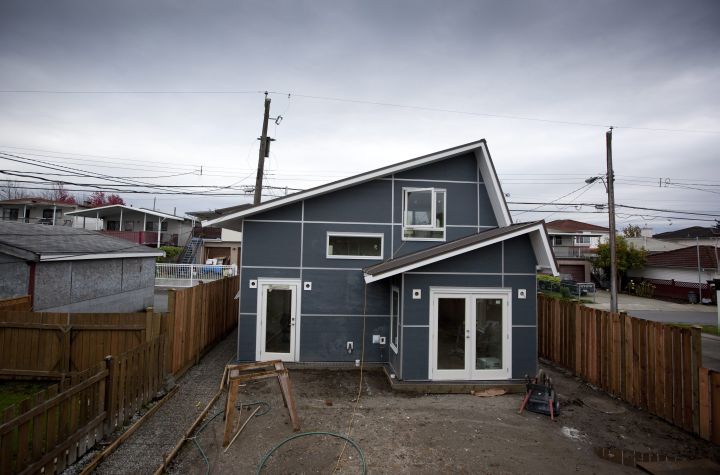Building laneway houses could soon get easier in Vancouver thanks to proposed changes to the city’s bylaws, which go to a public hearing on Wednesday.

The proposed changes include increasing the maximum allowable height of a laneway house, introducing minimum room size requirements, and introducing an outright review process for partial-two-storey laneway houses.
Developers say updating the bylaw is necessary, and will help improve livability in Vancouver.
“It’s definitely another step in the right direction,” said Larry Clay, board chair of the Greater Vancouver Homebuilders Association.
According to city staff, 45 per cent of new homes are being built with laneway houses. The hope is that the proposed changes will allow that number to increase.
What’s being proposed
City staff’s report on the proposed changes particularly highlights the creation of an outright review process for larger laneway houses, which the report says will cut down significantly on process time for application approvals.

Get daily National news
Laneway houses are allowed to be built with a partial additional storey, rather than a full second storey.
Under the current rules, homes with an additional storey require an additional design review by city planning staff. The proposed amendment would allow those homes to be approved by licensing staff directly.
The report says processing time could be cut by as much as 65 per cent under the new rules, which would impact the vast majority of applications.
According to the city, roughly 10 per cent of current laneway houses are only one storey.
The proposed amendments also include raising the maximum height of a laneway house with a pitched roof by 0.6 metres, to allow for 5.2 metres for a one-storey house and 6.7 metres for a partial two-storey house.
Minimum room sizes would also be introduced if the amendments are adopted, with the main shared living space required to be at least 16.7 square metres, and the main bedroom at least 8.5 square metres.
The staff report says these and other changes will increase livability and accessibility, with the height change allowing more use of upper floors in larger homes.
“We applaud any effort from the City of Vancouver to reduce permit wait times and policy that provides solutions for housing affordability,” Clay said in a later written statement.
Next steps
Vancouver developer Michael Geller says laneway houses are the future, and making them more accessible and cost-effective is a smart move for the city.
“Vancouver’s starting to be recognized internationally as a place where laneway housing has become a very successful housing alternative,” he said, citing Toronto and other major cities that are looking to Vancouver for solutions to increasing housing stock.
He also doesn’t foresee much opposition to the proposed changes at Wednesday’s public hearing.
“There are some neighbours who continue to be concerned about the impact of laneway houses on the street, on their backyard and so forth,” Geller said. “But I think this will be much more of a technical hearing, so I don’t think there will be much opposition.”
Geller says the next step is to allow laneway houses to be put up for sale. He acknowledges that some councillors oppose that idea as it would cut into the rental housing stock, which laneway houses are meant to bolster.
“I think that’s the future, and would be a great way to increase housing choices,” he said.
The staff report identifies regulating floor space ratios for other infill housing types, and the possibility of building laneway houses in areas without a lane, as areas being considered for further review.
The report does not mention the possibility of putting laneway houses up for sale.








Comments